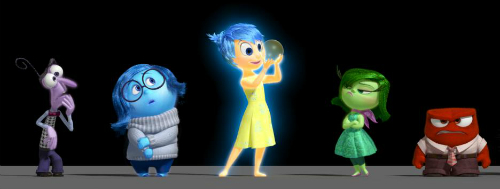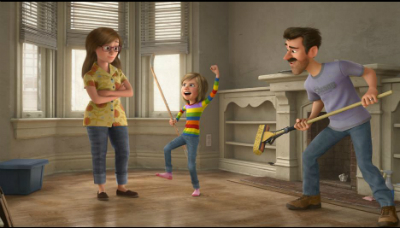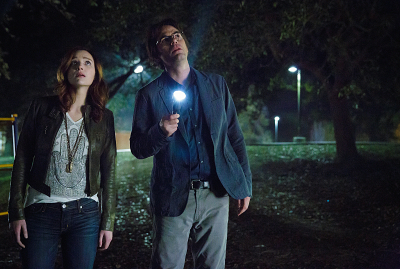
When it comes to Pixar films, the question really isn’t, “Is it any good” but rather, “How good is it?” Since the beginning with Toy Story, the studio has created such an image for itself that audiences expect greatness with everything that they do, which is saying a lot. In the case with their latest venture into the human mind and the emotions that occupy within it, it is a story unlike any of the studio’s other films. Many critics are claiming that Inside Out is the studio’s best work ever.
Inside Out took a total of five years to make which probably had to do with the fact that they were creating a whole new environment without much to model after. For instance, Toy Story is about a bunch of toys that come alive when their owner, Andy, is not home. For the filmmakers, they knew what the toys, the human characters and their surrounding looked like. Inside Out takes place mostly inside the head of an 11-year-old girl, Riley and most of the characters are imaginary. Who knows what Anger really looks like? For this film, Pixar chose two radical different looks. A more realistic version for Riley “outside her head life” and a more fuzzy, whimsical look that is similar to Disney’s Toot, Whistle, Plunk and Boom of 1953.
Here is the basic plot: Riley and her parents uproot from their home in Minnesota to San Francisco, California. The transition is a difficult one for Riley (Kaitlyn Dias) as she has to deal with a new home, new school and new friends. Her Mom (Diane Lane) and Dad (Kyle MacLachlan), try to help, but they have their own concerns to deal with as well.
Inside Riley’s head lives five emotions who all work together for the common good of Riley, which is essentially to keep her happy at all times. The workers on duty are Joy (Amy Poehler), Sadness (Phyllis Smith), Fear (Bill Hader), Anger (Lewis Black) and Disgust (Mindy Kaling). Joy is the ringleader of the bunch and possibly the self-appointed leader. She was the first one to arrive, so that makes sense. She seems to appreciate the other’s contributions, even if she has to steer them to think through things a different way, but she doesn’t really seem to “get” Sadness nor the role that she plays in Riley’s life.

Just as Riley is having a hard time with her new surroundings, Sadness doesn’t seem to be herself either and keeps touching things that she shouldn’t. She doesn’t even know why she does what she does. Joy finds keeping Sadness in check a challenge and in one incident, while trying to protect Riley, she ends up kicking herself and Sadness out of the brain’s headquarters, leaving Fear, Anger and Disgust to fend for themselves. From there, Joy and Sadness spend the rest of the movie trying to make their way back through the maze that which is the brain. Along the way, they meet various other obscure characters like Bing Bong (Richard Kind), Riley’s long-forgotten imaginary friend, ride the Train of Thought and end up in odd places like the Subconscious. It’s all pretty abstract.
Now, while I appreciate this film, I don’t love it like I thought I would. For me, the story was so abstract at times, that it was hard to really “feel” what these characters were going through. You never really know which situations actually presents a real danger to these characters. There are some funny bits that explain why you forget some things and why other things, like annoying catchy jingles can stick in your head, but overall, the comedy is lacking in this film. Another thing that I have always appreciated about the Pixar stories is that relationships with others is always central to the storyline. Here, Joy and Sadness go on a buddy trip and while Joy learn to appreciate Sadness, it comes off more like she tolerates her rather than befriends her. However, the concept that sadness can actually be a good thing will resonate hard with some viewers. The film also shows some beautiful scenes involving Riley and her parents, especially the one at the end, where they all admit to one another that it is “okay” to feel bad every once in awhile. The film is very pro-family, which is always comforting to see. Finally, the end credits features the funniest gags in the whole movie: We get to see what a dog is thinking and then later, a cat. Priceless.

As is the tradition, Inside Out comes with a special short film to start off your viewing pleasure. Like the movie it precedes, Lava is beautiful to look at. It is basically volcano love story of all things. The simple story actually has a profound ending that will go over the heads of children in the audience. In short, it is an allegory about holding onto to faith. Whether this was intended or not by the studio, Christians can view the short as an encouragement when one is disappointed with God. His timing is not our timing, but it is always perfect.

